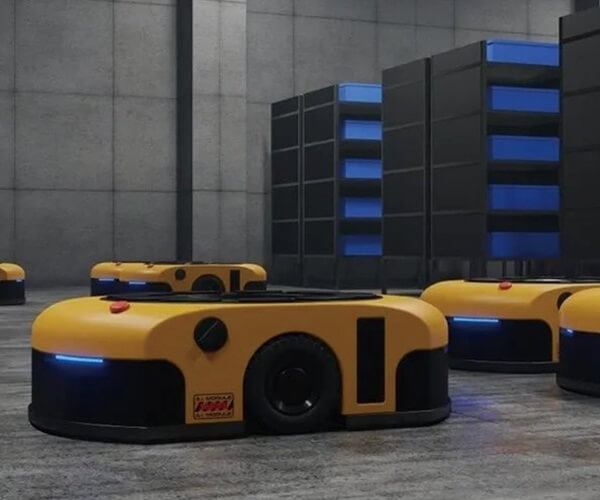Unleashing Creativity with the Micro Servo 9g SG90 in DIY Toy Cars
In the world of DIY robotics and miniature vehicles, few components have revolutionized the way hobbyists approach their projects quite like the micro servo 9g SG90. Small, lightweight, yet surprisingly powerful, this tiny servo motor has become a staple for enthusiasts building everything from remote-controlled cars to robotic arms, and even educational kits designed to teach electronics fundamentals. But one of the most exciting applications lies in the creation of miniature toy cars that respond dynamically to control signals, mimicking full-scale vehicles with precision and agility.

The micro servo 9g SG90 packs a punch, boasting a torque of around 1.8 kg/cm. That's enough to turn wheels or actuate mechanisms in compact projects without adding significant weight or size. Its sleek design—typically around 22.5 x 12.2 x 29 mm—allows it to be tucked into tight spaces, making it ideal for a variety of scale-model applications. When integrated into toy cars, this servo transforms simple models into responsive, custom-driven machines capable of executing complex maneuvers.
One of the key reasons for the SG90's popularity in toy car projects is its compatibility with popular microcontrollers such as Arduino, Raspberry Pi, and other open-source platforms. Hobbyists can easily program the servo to execute precise turns, speeds, and even hover in complex sequences, opening up endless possibilities for creative exploration. Whether you're building a racing car that dodges obstacles or a miniature off-road vehicle that responds to remote commands, the SG90 is a reliable partner.
Beyond its technical capabilities, the micro servo 9g SG90 offers an inviting entry point for beginners. Its affordability—often available at just a few dollars—makes it accessible for anyone interested in tinkering or learning about robotics. For educators and students, it presents an excellent tool to demonstrate principles of mechanical movement, control systems, and electronics in a hands-on manner.
But how exactly does one use the SG90 in a toy car? The basic setup typically involves connecting the servo's three wires—power (usually red), ground (black or brown), and signal (white, yellow, or orange)—to a microcontroller or remote control receiver. The firmware then sends PWM (pulse-width modulation) signals to instruct the servo on how far to turn. This simple yet effective control loop is what allows the tiny motor to faithfully reproduce the desired movements.
Building a responsive toy car also involves considerations beyond just the servo. For instance, selecting the right chassis, wheels, motors, and power supply all contribute to the overall performance. Many hobbyists start with off-the-shelf RC car kits that can be easily adapted with the SG90 for steering or other movements. Alternatively, custom-designed miniature vehicles with 3D-printed frames and integrated electronics enable complete personalization.
In terms of design philosophy, integrating a micro servo like the SG90 encourages a modular approach. You can upgrade or swap out components as your skills grow or as your project demands change. Want a car that can perform flips? Attach a second servo for an adjustable wing or spoiler. Aim for smoother steering? Tweak the PWM signals or experiment with different gear ratios and wheel sizes. The flexibility of the micro servo ensures that your toy car isn't just a static model but a platform for experimentation.
Of course, there are challenges. The SG90 is known to be somewhat sensitive to power fluctuations. Using a stable power source, typically a dedicated battery pack, is crucial to keep movements precise. Overloading the servo or forcing it beyond its torque limits can lead to overheating or mechanical failure. Therefore, understanding the capabilities and limitations of the SG90 is essential for creating durable and performant toy cars.
Another interesting aspect is the integration of sensors. By combining the SG90 with ultrasonic, infrared, or line-tracking sensors, DIY enthusiasts have created autonomous toy cars capable of obstacle avoidance, path following, or even remote navigation. These innovations bring a new level of interaction and entertainment to miniature vehicles, blurring the lines between simple toys and sophisticated robotics platforms.
Innovation doesn’t stop there. The advent of programmable microcontrollers enables complex control schemes, such as wireless Bluetooth steering or voice-command integration. Imagine a tiny car that you control through a smartphone app, or one that reacts to voice prompts—these are accessible projects that leverage the versatility of the micro servo 9g SG90.
Ultimately, the use of the SG90 in toy car projects exemplifies how small, low-cost components can unlock big creative potential. Hobbyists, educators, and students alike enjoy seeing their ideas come to life with simple electronics and a dash of ingenuity. It’s these projects that foster learning, spark innovation, and sometimes even inspire future careers in robotics and engineering.
Stay tuned for the next part, where we’ll dive into detailed assembly steps, tips for maximizing performance, and some inspirational safety and customization ideas to take your micro servo-powered toy cars from good to extraordinary.
Kpower has delivered professional drive system solutions to over 500 enterprise clients globally with products covering various fields such as Smart Home Systems, Automatic Electronics, Robotics, Precision Agriculture, Drones, and Industrial Automation.




































